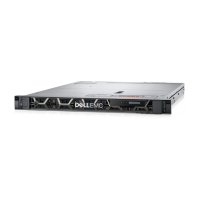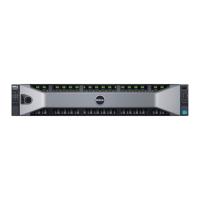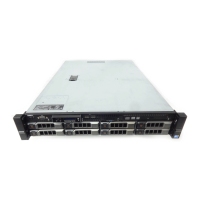Dell
23
PowerEdge R415 Technical Guide
4 Power, Thermal, Acoustic
4.1 Power Supplies
The PowerEdge R415 is powered by either a non-redundant 480W power supply or an optional redundant
500W power supply.
The power supply subsystem provides power to the planar, the four internal hard drive bays, and one slim
optical disk drive bay. Power is soft-switched, allowing power cycling using a switch on the front of the
system enclosure or through software control (through server management functions). The power system is
compatible with industry standards, such as ACPI and Server 2000.
For a redundant power supply configuration, the second power supply provides hot-pluggable power
redundancy. In redundant mode, the system distributes the power load across both power supplies to
maximize efficiency. When a power supply is removed with the system powered on, the full power load is
picked up by the remaining power supply.
If using only one hot-plug power supply, the power supply is installed in the PS1 location and a blank module
(metal cover) is installed in the PS2 location for factory consistency. Electrically, the system can operate
with a single power supply in either bay. The power supply has automatic input voltage detection. An
auxiliary power-out receptacle is not provided on this unit.
The power supply in the chassis has been rated as 82% efficient at 20% and 100% loads, and 85% efficient at
a 50% load under 115V AC input line. Redundant power efficiency is 88% at 20% and 100% loads, and 92%
efficiency at a 50% load under 230V AC input line.
Field replaceable unit (FRU) data is stored in the memory of the power supply microcontroller. Additionally,
the power supply firmware can be updated by the baseboard management controller (BMC) over the PMBus.
4.2 Power Supply Specifications
Table 4 shows the power supply specifications.
Table 4. Power Supply Specifications
Non-Redundant Power
Supply
L-260
1
x W-106 x H-40.0 (mm)
L-260
1
x W-54.5 x H-38.0
(mm)
15A @ 120VAC,
10A @ 240VAC
15A @ 120VAC,
10A @ 240VAC
Under typical line conditions
and over the entire system
Under typical line conditions
and over the entire system

